THE LAYBACK JUMP: JEM HALL
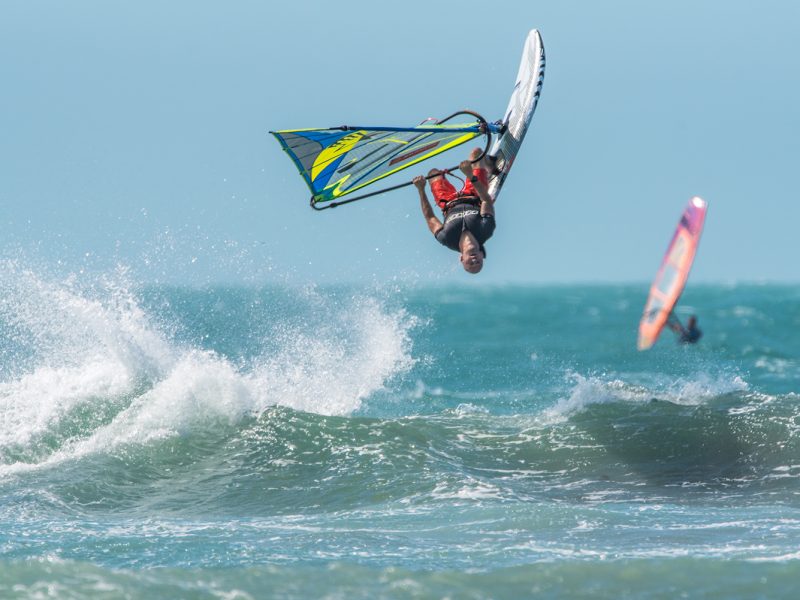
JEM HALL
MOVE ON UP – WINDSURFING TECHNIQUE
THE LAYBACK JUMP
In this technique article we throw our heads back for the layback jump. It’s a move which feels both weird and great, gives you better in-flight control, offers a great new perspective on jumping and also gives you a head start towards some of the backwards-rotating jumps which involve head movements.
PHOTOS –
Nicolas Jones
www.jemhall.com
(This feature originally appeared in the Jan/Feb 2020 issue of Windsurf Magazine. To read more features like this, Print and Digital subscriptions are available.
Essentially to achieve this move you are looking to perform a vertical jump trajectory and during same, pull the boom in and arch back to look straight behind you as you’re going up so you can check out the beach action, any photographers or your mate lying in the water!
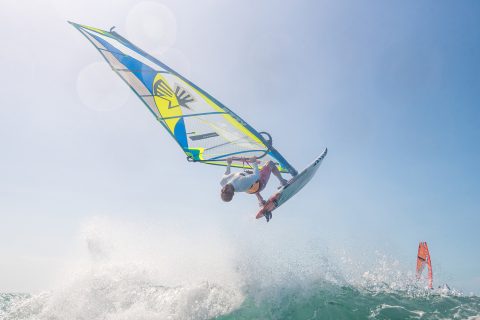
You can really build up how much you lean back, and go more vertical, as you do more and gain more confidence, you will also become more oriented and furthermore your steering and landing skills will steadily improve.
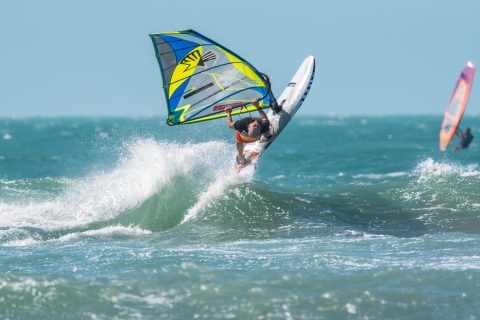
Identify the ramp that you’ll be boosting your airtime on. Unhook and get over your board and open the sail in readiness for take-off. Ensure you lean back as you push down hard through the back leg to get the nose up. Begin to both lean and look back as you are about to leave the ramp, heading
slightly into the wind.
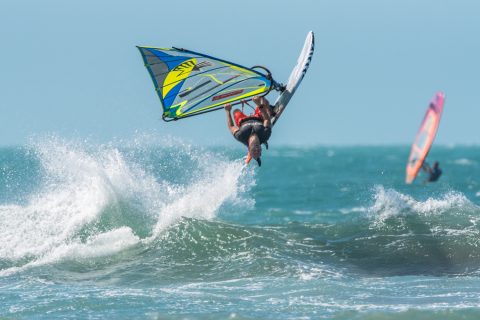
Throw your hips at the sail and keep your arms relatively straight. You need to really throw your head back and look back at the beach, aim to actually spot something you can see as this can really both help you and orientate you. Keep your eyes open as the sky flashes past you. Your legs should position the board in the air with the back leg pulling in and the front leg subtly pushing the nose off the wind to ensure the nose keeps across the wind –
i.e. that good old scissoring technique.
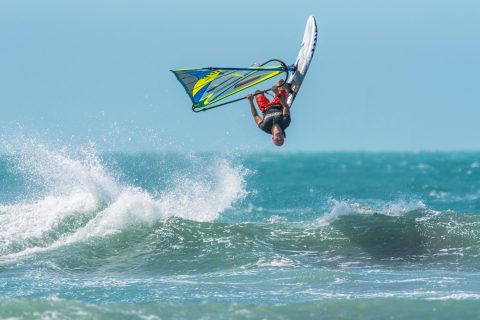
Now that you’re looking back and enjoying the view, you should begin to position the rig open and across you in order to aid steering off the wind for your descent. If you are enjoying the position then flex some more through straightening your arms further and grinding the boom with your crotch.
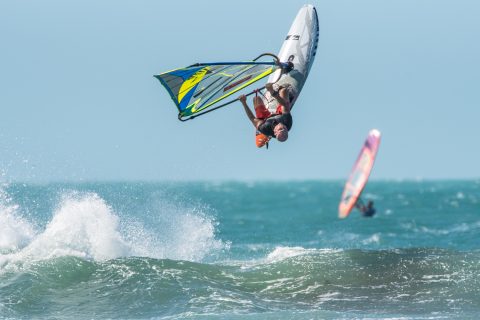
You haven’t got that much time to take in the view, so as you feel the board reach the apex and begin to fall it’s time to get your head up and start looking forward once again and push down on your front hand to get the nose down, and thereby tail up, so you are ready for landing. This will get the kit in a position to float down and not land like a pogo stick.
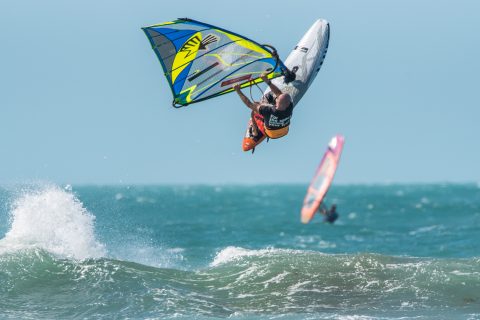
As you should be doing from all vertical jumps, continue to drop the nose and pull the tail up so that you land slightly tail-first. To assist in this the front arm pushes down on the boom and the back leg pulls up and in, as the front foot pushes the nose off. This pro-active early steering will help you float out of the sky and land with some momentum, rather than stopping dead. This works in both this move and all vertical jumps.
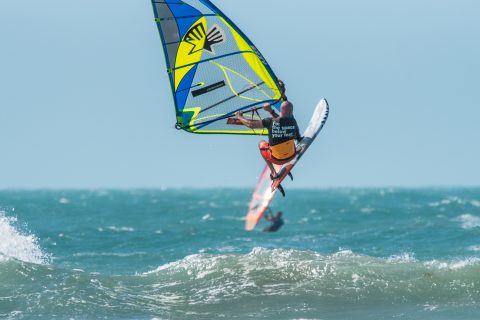
Look forward to spot your landing and continue steering the nose off the wind to get the wind under your board so you can be tucked until just before landing. Feeding the rig across, and subtly pulling it back you further helps steering and gets the wind in the sail for some winged parachute descent.
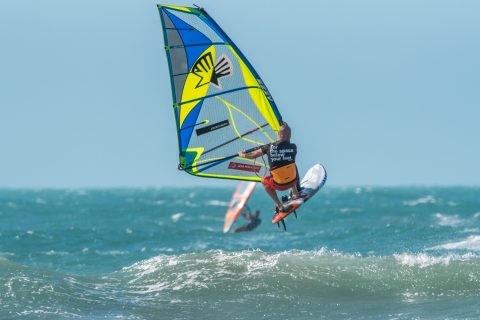
As you are about to land aim for a tail-first touchdown and try to get your tail upwind and nose downwind. Upon landing throw the rig forward and open for a quick getaway. Note: my rig should be more across me by now, naughty coach!
Kit:
Generous straps to allow feet to pop and steer the board well in the air. Long lines enable you to sail fast over bumpy water and facilitate easy unhooking from a low position. Flatter sails cut through the air better and are easier to steer. Medium to smaller freestyle wave or wave boards so they do not have too much windage in the air.
Conditions:
Small to medium sized waves with side to side-on wind so you can take off across the wind easily. The wave should be quite steep but not throwing as this can put you off balance when you need to be composed.
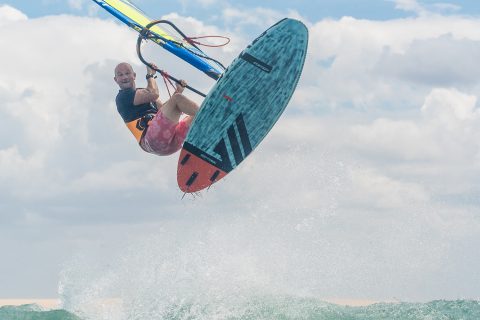
RRD boards, wetsuits & softwear, Ezzy sails & Black Project fins sponsor Jem Hall. Get him live and direct on one of his highly acclaimed coaching holidays – check out his site www.jemhall.com for the latest details. You can also follow him on twitter / Facebook / Instagram.
The post THE LAYBACK JUMP: JEM HALL appeared first on Windsurf Magazine.
Windsurf Magazine https://ift.tt/2XWhIJC